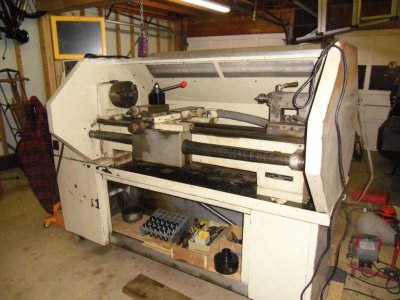It's a full CNC lathe. It was sold by South Bend with no gearbox and no apron, and an aftermarket company installed servos for the X- and Z-axis. The leadscrew is only driven by the servo motor, shown in the first picture from my last post. The servo drives the leadscrew through a zero-backlash poly coupler, so no misalignment of the servo can be translated to the leadscrew.
I'm not certain the leadscrew isn't bent. It may be that the apron/ballnut is holding it in alignment. I'll probably have to take it totally off to verify 100% that it is not the issue. Just trying things in the mean time.
Also, is it possible that one of the balls inside the ballnut has become damaged? It would stand to reason that each time a ball recirculates it may be forcing the ballnut off center?
I'm also going to try turning a test pass by hand with the z-axis servo disconnected, and I need to try a pass with the x-axis servo disconnected as well although that it much more difficult (it's mounted behind the apron).
I'm not certain the leadscrew isn't bent. It may be that the apron/ballnut is holding it in alignment. I'll probably have to take it totally off to verify 100% that it is not the issue. Just trying things in the mean time.
Also, is it possible that one of the balls inside the ballnut has become damaged? It would stand to reason that each time a ball recirculates it may be forcing the ballnut off center?
I'm also going to try turning a test pass by hand with the z-axis servo disconnected, and I need to try a pass with the x-axis servo disconnected as well although that it much more difficult (it's mounted behind the apron).


